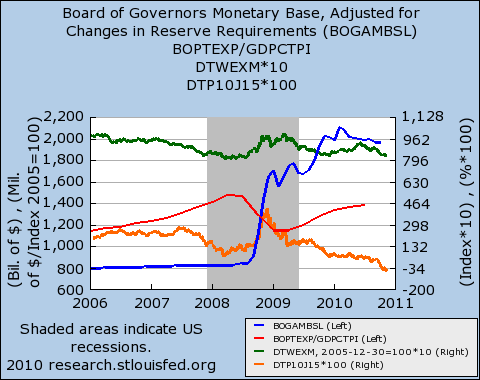

The summation of all the three Cash Flows gives the total cash inflow/outflow of the firm. In this topic, we will learn the different examples of cash flow statement. The first section of the cash flow statement covers cash flows from operating activities and includes transactions from all operational business activities.
When you tap your line of credit, get a loan, or bring on a new investor, you receive cash in your accounts. Using the cash flow statement example above, here’s a more detailed look at what each section does, and what it means for your business. For example, when we see $20,000 next to “Depreciation,” that $20,000 is an expense on the income statement, but depreciation doesn’t actually decrease cash. For instance, when we see ($30,000) next to “Increase in inventory,” it means inventory increased by $30,000 on the balance sheet. We bought $30,000 worth of inventory, so our cash balance decreased by that amount. That means you know exactly how much operating cash flow you have in case you need to use it.
ProfitabilityProfitability refers to a company’s ability to generate revenue and maximize profit above its expenditure and operational costs. It is measured using specific ratios such as gross profit margin, EBITDA, and net profit margin. In Year 1, the income statement consists of the following assumptions. Whenever a company is buying new machinery, cash is spent, so cash moves out from Cash Flow from investing decreases. Cash Flow from operation considers only the cash Inflow and outflow from the daily operation of the company. If you’re an investor, this information can help you better understand whether you should invest in a company.
Keep track of how you are spending money to gain more control over your financial habits and outlook. This template accounts receivable template lists customers, invoice tracking details, amounts due, and outstanding balances. Keeping track of these accounts can inform your collections process by helping you quickly identify which overdue payments have aged significantly. Below you’ll find a collection of easy-to-use Excel templates for accounting and cash flow management, all of which are fully customizable and can be downloaded for free. Operating Cash Flow is a measure of the amount of cash generated by a company’s normal business operations. Cash FlowsCash Flow is the amount of cash or cash equivalent generated & consumed by a Company over a given period.

Each month has a separate sheet so that you can get a thorough picture of cash inflows and outflows for both short- and long-term periods. Even when a reporting entity is using the indirect method, the direct method may be helpful in evaluating the proper classification of cash flows. Investing activities include any sources and uses of cash from a company’s investments.
Statement of Cash Flows: Indirect Method Accounting Format
Your business can be profitable without being cash flow-positive, and you can have positive cash flow without actually making a profit. Finally, if business operations suffice for managing proper cash flow, find a source of short-term working capital. These expenses include the repurchase of treasury stock, repayments, etc. Incomes include cash received against share issuance and borrowings done by the company. Note how whichever method is used that the same cash is generated from operating activities. At the start of the accounting period the company has retained earnings of $500 and at the reporting date retained earnings are $700.
Financing activity cash flows relate to cash flows arising from the way the entity is financed. Entities are financed by a mixture of cash from borrowings from third parties and by the shareholders . Investing activity cash flows are those that relate to non-current assets including investments .
- Cash flow is typically depicted as being positive (the business is taking in more cash than it’s expending) or negative (the business is spending more cash than it’s receiving).
- When CapEx increases, it generally means there is a reduction in cash flow.
- Note that the cash proceeds ffrom the disposal of PPE ($20) would be shown separately as a cash inflow under investing activities.
- You can customize any of them to include the specific types of cash flow activities that apply to your company.
For instance, the purchase of land and joint venture investment is cash outflow, while equipment sale is a cash inflow. Cash Flow is one of the most important financial statements that is referred by stakeholders, auditors, analysts, and other persons related to the company. At times sales are made on credit, and it inflates the net profit of the firm. So if an analyst is suspicious regarding the increased net profit, then he can tally it with the cash flow statement. If cash flow is not showing any jump, then most of the sales are made on credit, and there is a risk regarding the recovery. Cash flow is an important statement that auditors, analysts, and other parties use to check the sustainability of the net profit.
II. Cash Flow from Investing Activities
As an investor, you must look deep into the company if they are selling key assets. There can be scenarios where companies need to sell their assets to maintain dividend levels. The cash flow cannot project the profits as it shows only the cash position of a company. CFS-2Financing activities are activities that result in changes in the size and composition of the owner’s capital. The owner’s capital includes preference share capital and borrowings.

For example, an increase in the levels of inventory and receivables will have not impacted on profit before tax but will have had an adverse impact on the cash flow of the business. Thus, in the reconciliation process, the increases in inventory and trade receivables are deducted from profit before tax. Conversely, decreases in inventory and trade receivables are added back to the profit before tax. Finally, the payments for interest and tax are presented – usually as a further deduction. A cash flow statement, also referred to as a statement of cash flows, shows the flow of funds to and from a business, organization, or individual. It is often prepared using the indirect method of accounting to calculate net cash flows.
Usually, negative investing cash flows indicate the expansion of business or replacement of old assets. Thus, it is necessary to find out whether investments can generate revenue growth in the future or not. A bank overdraft should be treated as a negative cash balance when arriving at the cash and cash equivalents. There are two different ways of starting the cash flow statement, as IAS 7,Statement of Cash Flowspermits using either the ‘direct’ or ‘indirect’ method for operating activities. Enterprises must disclose, along with management commentary, the amount of substantial cash and cash equivalents held by an enterprise which isn’t available for use.
The CFS is distinct from the income statement and the balance sheet because it does not include the amount of future incoming and outgoing cash that has been recorded as revenues and expenses. Therefore, cash is not the same as net income, which includes cash sales as well as sales made on credit on the income statements. As for the balance sheet, format of cash flow statement the net cash flow reported on the CFS should equal the net change in the various line items reported on the balance sheet. This excludes cash and cash equivalents and non-cash accounts, such as accumulated depreciation and accumulated amortization. For example, if you calculate cash flow for 2019, make sure you use 2018 and 2019 balance sheets.
While positive cash flows within this section can be considered good, investors would prefer companies that generate cash flow from business operations—not through investing and financing activities. Companies can generate cash flow within this section by selling equipment or property. Financing activitiesCompanies must prepare and present cash flowsfrom operating, financing as well as investing activities in such manner that is apt to their business. The cash flows of a business are reported on the statement of cash flows. There are two variations on the template for this report, which are the direct method and the indirect method. The indirect method is used by nearly all organizations, since it is much easier to derive from the existing accounts.
How the cash flow statement works with the income statement and the balance sheet
Generally, cash flow is reduced, as the cash has been used to invest in future operations, thus promoting future growth of the company. Cash flow from financing is the final section, which provides an overview of cash used from debt and equity. Are you interested in gaining a toolkit for making smart financial decisions and the confidence to clearly communicate those decisions to key internal and external stakeholders? Explore our online finance and accounting courses and download our free course flowchart to determine which best aligns with your goals.
To calculate the operation section using the direct method, take all cash collections from operating activities, and subtract all of the cash disbursements from the operating activities. The cash flow records the inflow and outflow of actual cash and cash equivalents. Whereas, the fund flow records the categorized movement of cash in and out of the business. Moreover, this template provides the cash flow from operating, investing, and financing activities. The direct method is relatively straightforward in that all the data are cash flows so it is really just a case of listing the receipts as positive and the payments as negative.
Small Business Format
If you do your own bookkeeping in Excel, you can calculate cash flow statements each month based on the information on your income statements and balance sheets. If you use accounting software, it can create cash flow statements based on the information you’ve already entered in the general ledger. Add receipts and payments to this daily cash flow template to get a deep understanding of business performance. You can customize the list of cash inflows and outflows to match your company’s operations.
The double entry for depreciation is a debit to statement of profit or loss to reflect the expense and to credit the asset to reflect its consumption. Here we can take the opening balance of PPE and reconcile it to the closing balance by adjusting it for the changes that have arisen in period that are not cash flows. At the start of the accounting period the company has a tax liability of $50 and at the reporting date a tax liability of $90.
Any other forms of inflows and outflows such as investments, debts, and dividends are not included. Cash flow from investing activities includes inflow and outflow of cash in investing activities. Usually, they are the long-term assets of the company’s balance sheet.
In the case of a trading portfolio or an investment company, receipts from the sale of loans, debt, or equity instruments are also included because it is a business activity. Accrued IncomesAccrued Income is that part of the income which is earned but hasn’t been received yet. Add to it all the incoming cash from various sources like cash sale of goods or services, proceeds from the sale of assets or investments, the funds acquired by the issue of shares or through bank loans, etc. Hello, I am wondering why taxes of $8 were not deducted from the cash flow via the operating cashflows to get to $40 from the $48.

